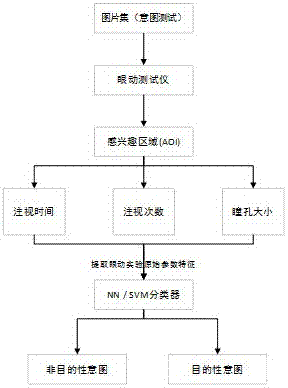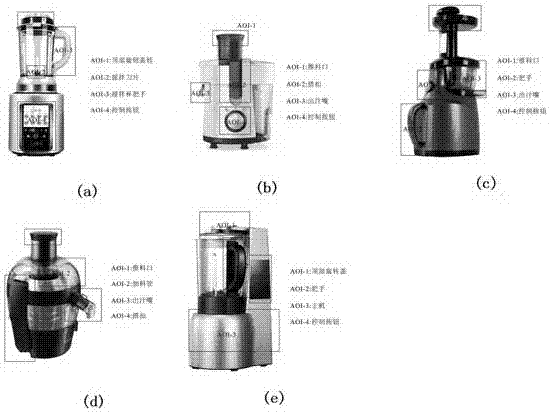Implicit intention identification and classification method based on eye movement tracking
An eye tracking, recognition and classification technology, applied in the field of human-computer interaction, can solve problems such as low recognition accuracy and inability to recognize implicit intentions
- Summary
- Abstract
- Description
- Claims
- Application Information
AI Technical Summary
Problems solved by technology
Method used
Image
Examples
Embodiment
[0064] According to the survey of the juice extractor industry, when consumers purchase a juice extractor, 70% of enterprise users think that the stability, reliability, efficiency, safety, comfort, brand culture, style, usage habits, human-machine quality of the product system Implicit intent such as interaction is a key influencing factor for its selection. From the perspective of epistemology, human cognition begins with visual recognition, which enters the processing center of the brain through visual nerve transmission, and is processed through the comprehensive processing of human knowledge in the fields of culture, society, technology and aesthetics in the brain, thus forming a fuzzy image. Perceptual images become our most direct and profound semantic cognition of things. Therefore, in-depth research on the implicit intention of human cognition plays a guiding role in the design research of industrial products.
[0065] 1 experimental equipment
[0066] ①EyeSo eye tr...
PUM
 Login to View More
Login to View More Abstract
Description
Claims
Application Information
 Login to View More
Login to View More - R&D
- Intellectual Property
- Life Sciences
- Materials
- Tech Scout
- Unparalleled Data Quality
- Higher Quality Content
- 60% Fewer Hallucinations
Browse by: Latest US Patents, China's latest patents, Technical Efficacy Thesaurus, Application Domain, Technology Topic, Popular Technical Reports.
© 2025 PatSnap. All rights reserved.Legal|Privacy policy|Modern Slavery Act Transparency Statement|Sitemap|About US| Contact US: help@patsnap.com



